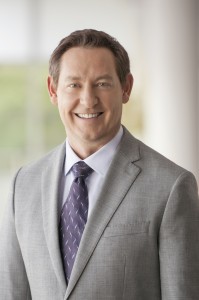Pre-MIPTV interview series: Jim Samples, Scripps Networks Interactive
Scripps Networks Interactive made news recently with its acquisition of a majority stake in Polish broadcaster TVN. Jim Samples, president, international at the company talked to Stuart Thomson about that investment, plans for UKTV and his priorities for the coming year.
Scripps Networks Interactive, known outside the US for its portfolio of thematic lifestyle pay TV channels, made headlines in March with its dramatic acquisition of Polish commercial broadcaster TVN for €584 million.
Jim Samples, Scripps’ president, international, says that TVN “checked all the boxes” of what the company looks for from international acquisitions. “Poland is a thriving market that is one of the few markets in Europe that has continued to grow through the recession. TVN is a strong player and is well managed. It has been able to take a leadership position in broadcast and has grown a suite of DTT and pay channels, including some very strong lifestyle channels. It allows us to have a second important hub for our business in Europe as we continue to expand. It was a tremendous strategic fit.”
Upmarket viewership
Samples says that TVN’s audience also fitted with the profile of Scripps’ own viewership – upmarket, with a female skew – that enabled it to win premium pricing for its advertising.
One of the other key attractions of TVN was the existence of “a management team that has been hugely successful”, says Samples. “It is not our expectation that we are going to go in and change their formula. Where we can help is in accelerating their strategy of building out their suite of lifestyle channels and thematic channels.” He says that TVN successfully created hit Polish versions of international formats, and Scripps can make available its own lifestyle formats and content. The learning process works both ways, with TVN’s experience in building digital platforms and content providing valuable knowledge that Scripps can use in other markets.
With regards to TVN’s stake in pay TV platform nc+, Samples says that this “is an important component of its overall business” that “gives it an anchor in distribution” and that there are no plans to divest this asset. He points out that TVN is also distributed internationally to expat audiences in western Europe and the US.
“Markets that are large enough to support a lot of original production in language will have a different characteristic than smaller markets that rely on international production. The fact that the Polish audience is watching lots of Polish productions is a real strength,” he says. “The top broadcast networks will continue to be very important even if much of their production will flow through different platforms.”
Samples says that Scripps has always taken a “three-pronged approach” to international expansion, focusing on the rollout of its own lifestyle brands, the acquisition of third-party channels like Travel Channel to further its reach in new markets, and investment in joint-ventures such as its 50% stake in UKTV, the UK thematic channel operator it owns jointly with BBC Worldwide.
There has been press speculation recently about Scripps’ interest in taking full control of its UK JV, to the point of seeking a meeting with BBC Trust chair Rona Fairhead to convince her of the merits of a sale in the face of BBC Worldwide’s reluctance to sell. Samples declines to be drawn on this, although he confirms that a meeting with Fairhead was arranged. “It is true that we will be introduced to Rona Fairhead, but that is purely an introductory meeting. We have been very happy with our investment in UKTV. They have grown their audience share beyond 9% now and they have built out free to air channels very effectively,” he says.
Free-to-air TV
Samples says that “the only disadvantage [of 50:50 ownership] is that the investment is less visible from a financial reporting standpoint, but in terms of management of UKTV, it is very much managed by Darren [Childs] and his team, and they benefit from an outstanding pool of content from the BBC. We think we bring value from our experience in lifestyle, so any changes wouldn’t change that mix.”
He maintains that Scripps is open to other JVs where they make sense, and says they are “an important component” of its business. “Where there is an opportunity to come together with a partner that either brings distribution or content or geographic expertise, we see that as a way of accelerating our international expansion,” he says. “Generally we would prefer JVs where we meet the criteria for consolidation, and I don’t think we’re unique in that. We will still likely enter into other JVs where we are a minority partner, but on balance we would like to be the majority partner in order to consolidate them.”
Both TVN and UKTV are strong free-to-air players, and Samples says that the company has been more than willing to take the plunge into free TV where market conditions suggest that is the best model. “In markets where there is very little opportunity for distribution and where pay TV is not highly penetrated and DTT is growing we will move in that direction and that is what we’ve done in Italy,” he says, referring to the launch of Fine Living as a free-to-air channel in that market. If the economics justify the cost of transmission, he says, it will make sense to look at free-to-air opportunities, with Italy standing out as a prime example. Scripps in the UK also operates a mixed model, with Food Network and Travel Channel distributed on Freeview.
Scripps’ own portfolio of channels is about the right size for most of the markets in which it is present, Scripps says. “In some markets we may have an opportunity for Home and Garden Television [HGTV], which is our leading network in the US and very solidly a top 10 US network,” he says.
In Europe much of HGTV’s content goes to Fine Living. “But we are increasingly seeing interest in HGTV not only in Europe but also in Asia, where we launched it in Singapore, the Philippines and soon other markets as well.” He says Scripps is seeing interest in the channel as a result of the presence of HGTV programming on Fine Living.
Samples says that the company’s main goal in Europe is filling in gaps in distribution, and he cites the company’s recent deal with UPC as an example of the way it is making progress.
He says Scripps is also eager to add further localisation of its channels in Europe. “For the lifestyle networks, the core content is our big international productions. Localisation means in the first case dubbing and subtitling. In some cases it means taking successful formats and producing them locally,” he says, citing the example of Chopped in South Africa and the UK. Beyond that, local production is a possibility. Scripps has mostly focused on doing this in the UK, South Africa and Brazil to date. “Those are the markets where we have sufficient penetration for that to make sense,” he says. Samples says he would like to see more shows produced internationally feeding back to the US, such as food show Siba’s Table, and he expects to see an acceleration of local production this year.
Scripps, like other international providers, has also developed digital distribution. In the UK, Scripps channels are available on the TVPlayer free catch-up service and the company has produced content for mobile distribution: “Since we own almost all of our content the only thing that would slow us down is whether the platform is successful and is there a financial model that makes sense.”
Samples is more sceptical about the multichannel network market. “We have done some of that, but generally the financial model doesn’t make a lot of sense. We have been more inclined to put resources towards our traditional model and models where there is a clear monetisation opportunity,” he says.
In a number of markets, including in the US, Scripps makes more from advertising than from carriage fees. “I expect advertising will be a major driver for us for thematic channels around the world,” says Samples. “We are successful because we are very targeted and selective about which audiences we are trying to reach. For the most part, with food and home programming that is upscale women. Travel Channel is more balanced between male and female, but it’s not our goal to cover all the categories out there. We can be more successful being very targeted and being the leader in those categories – and that is what you will see us do.”




